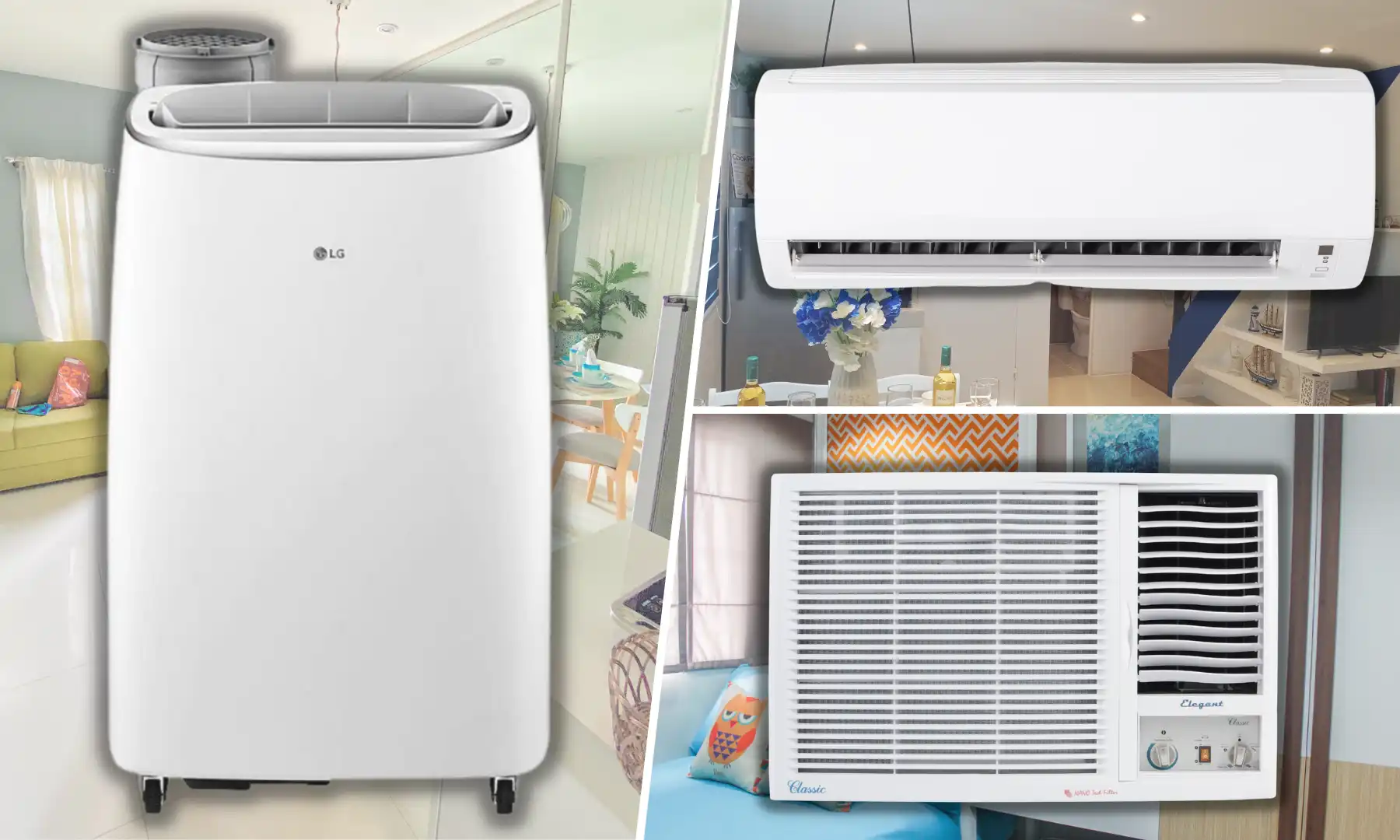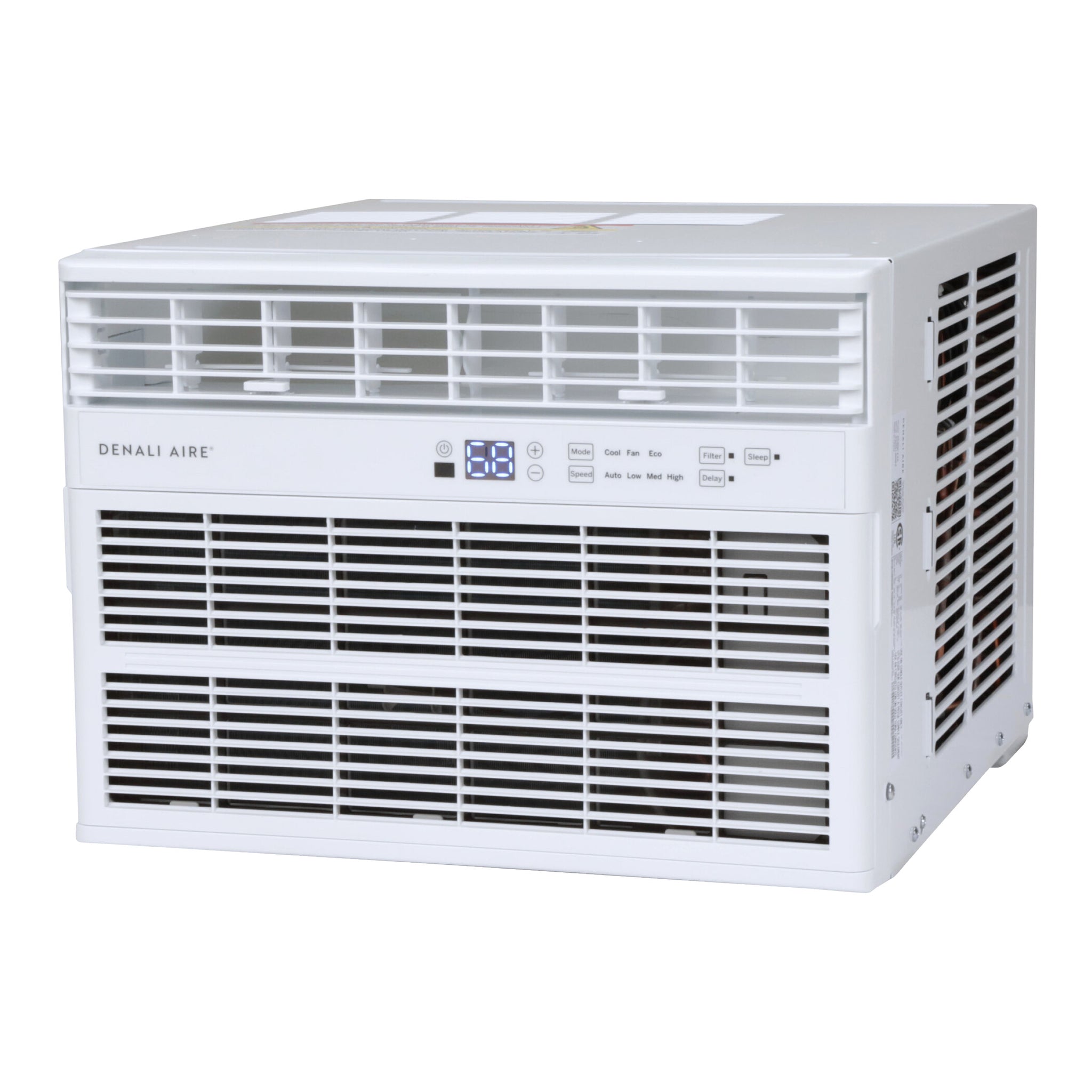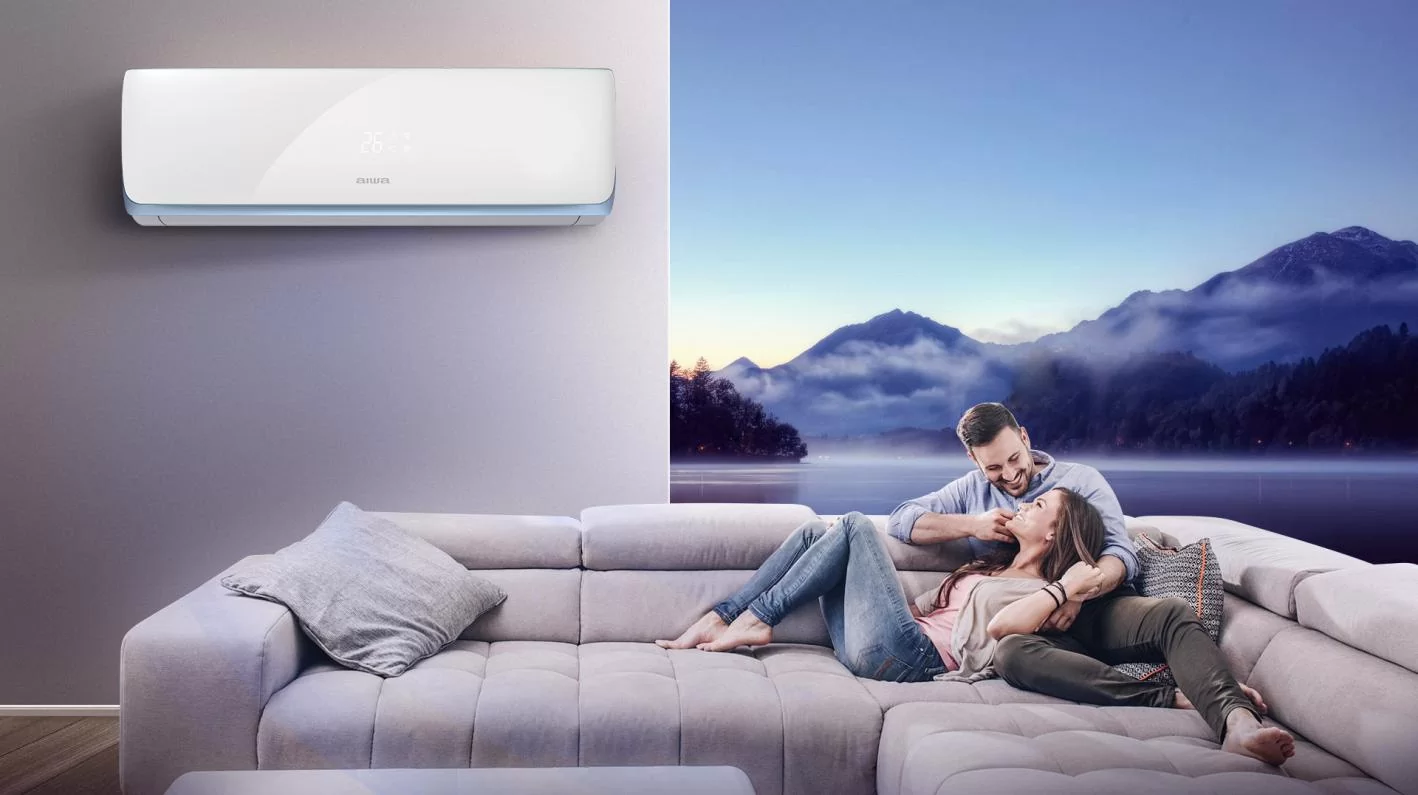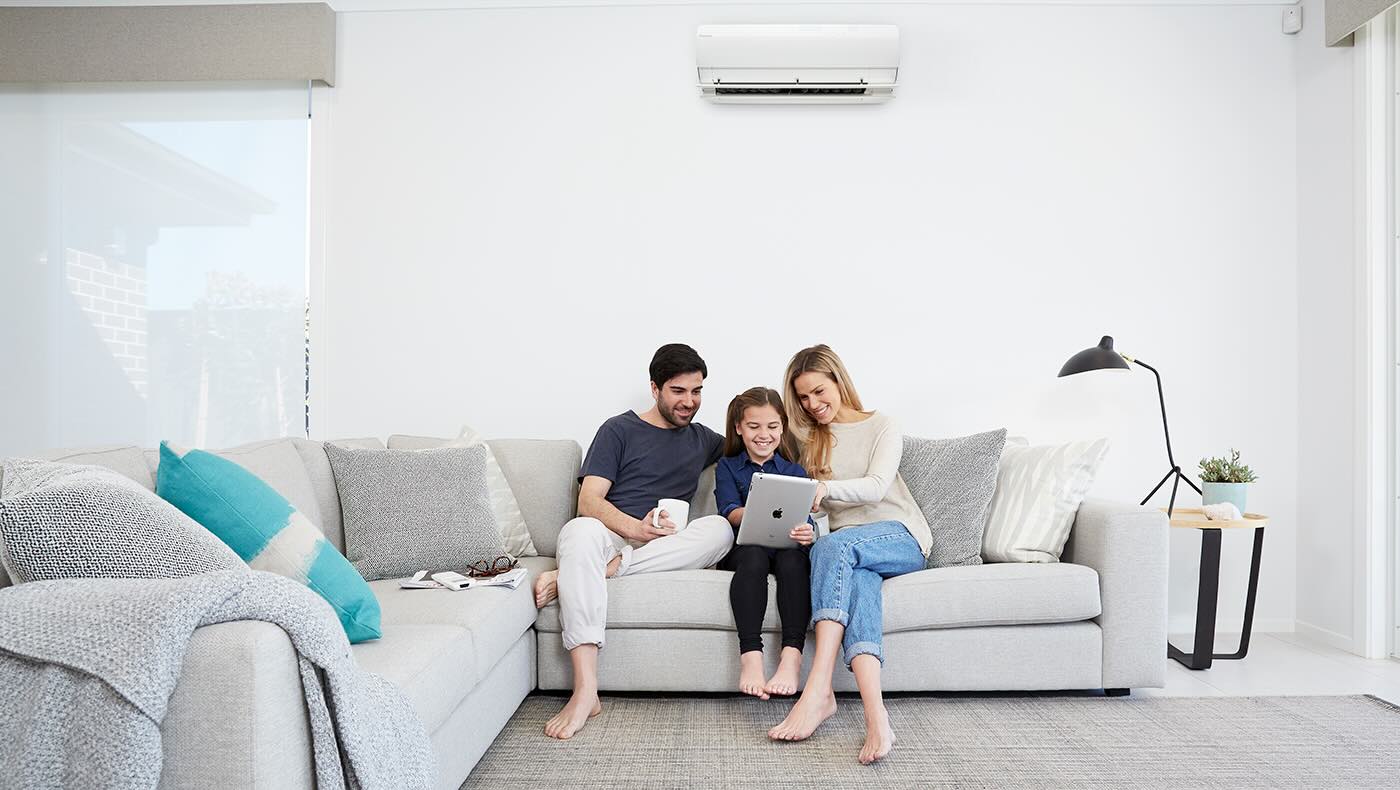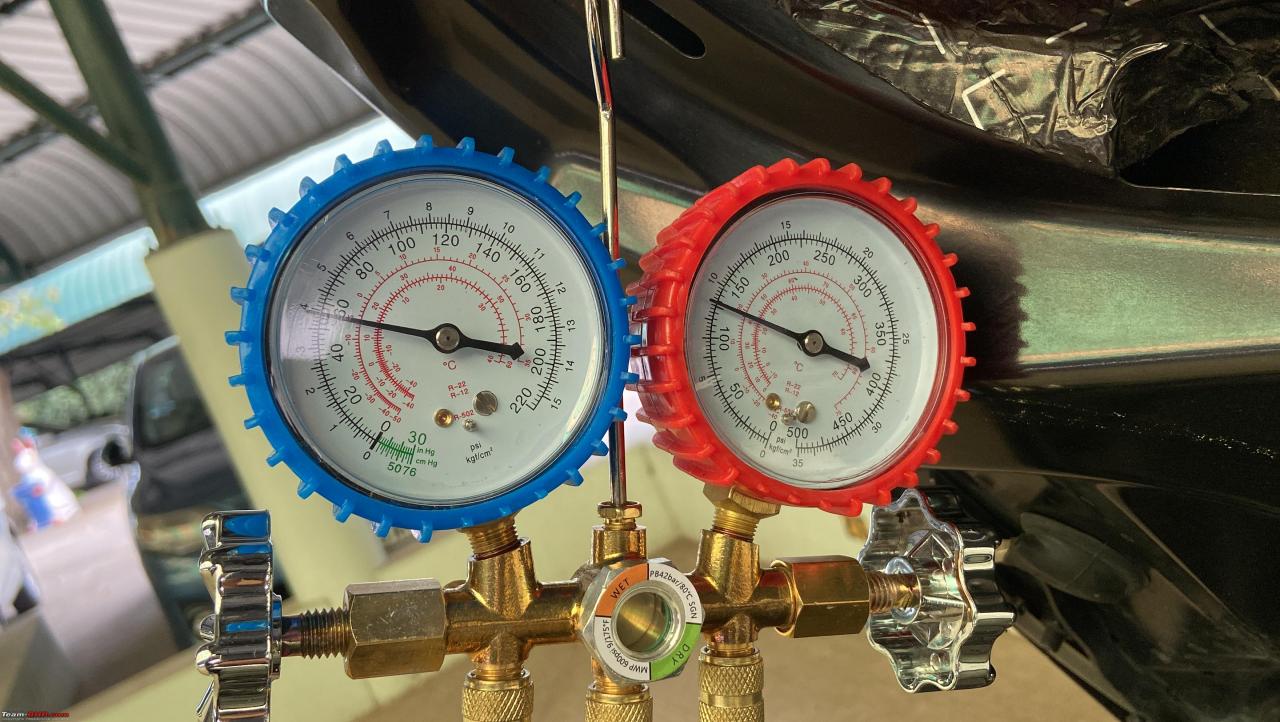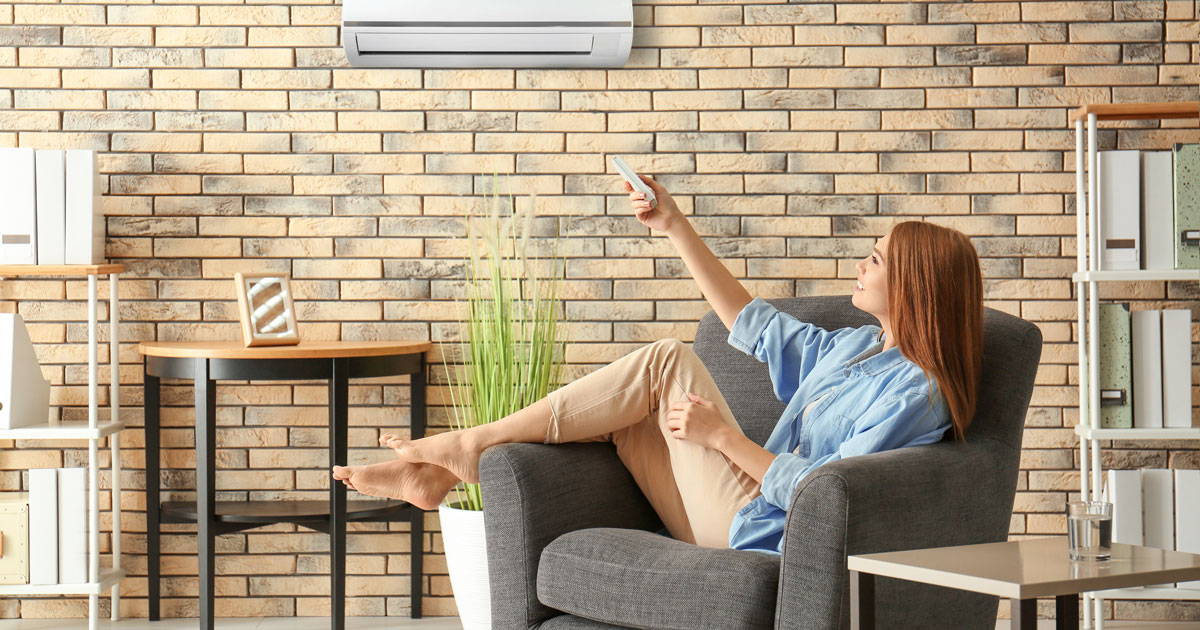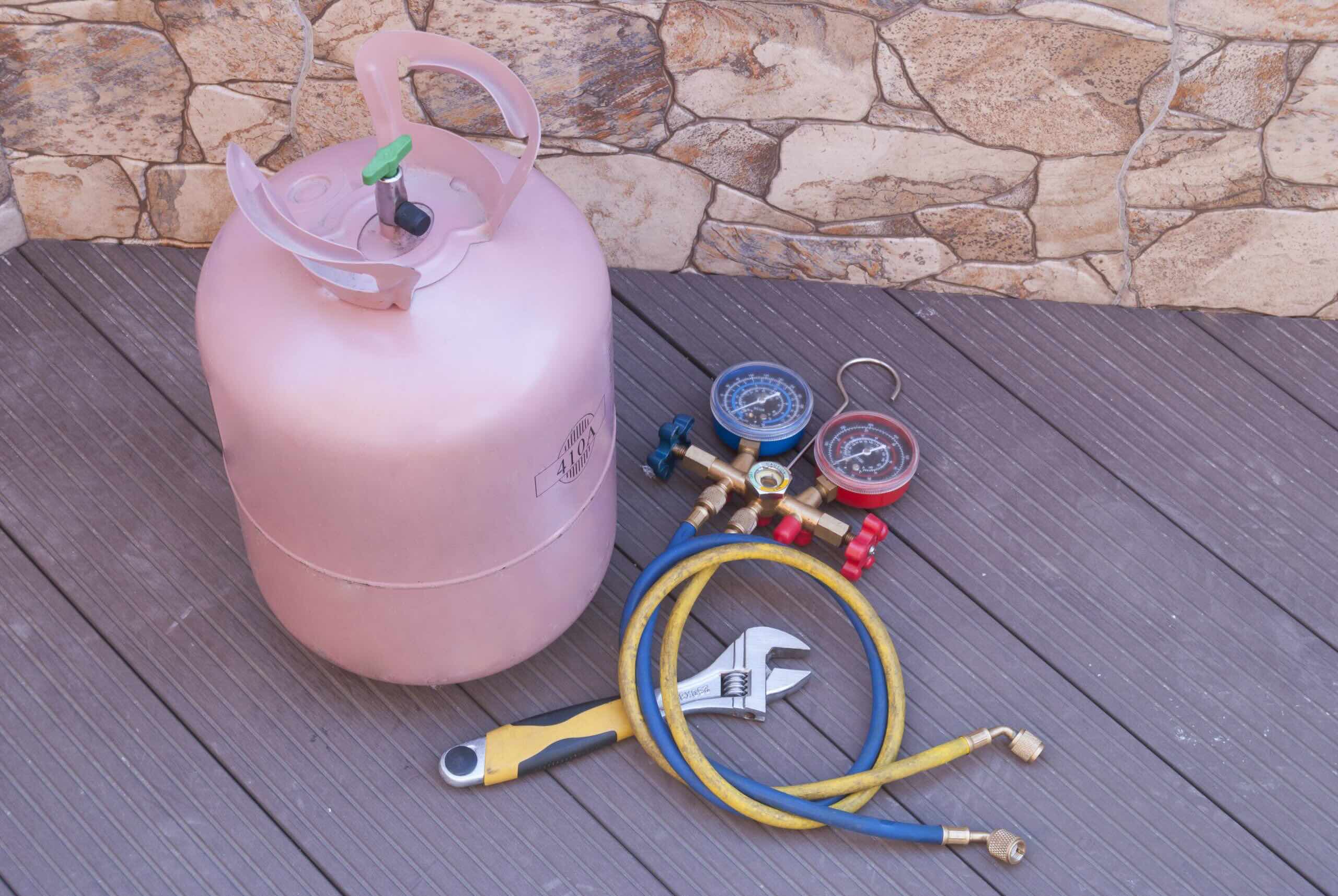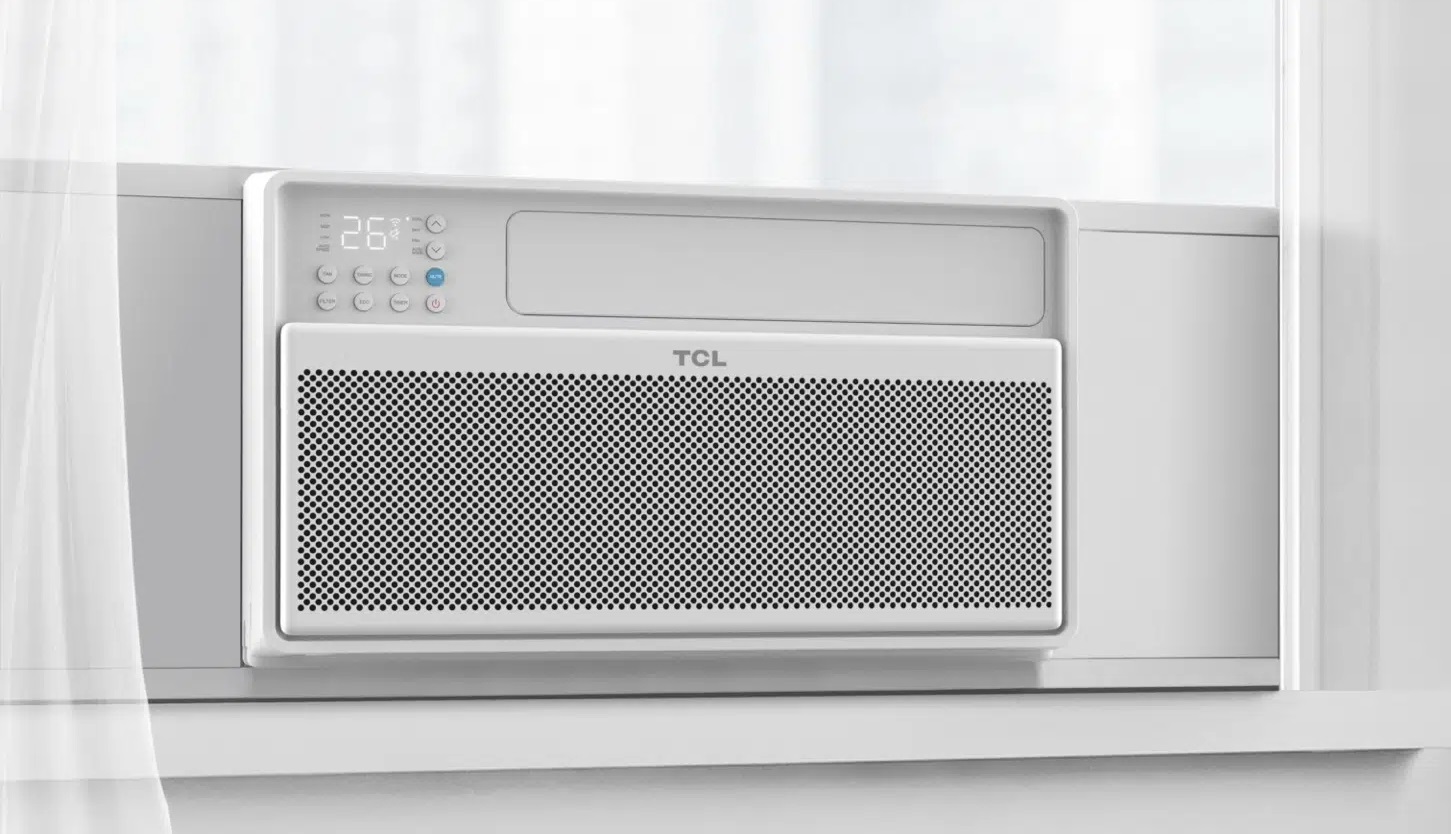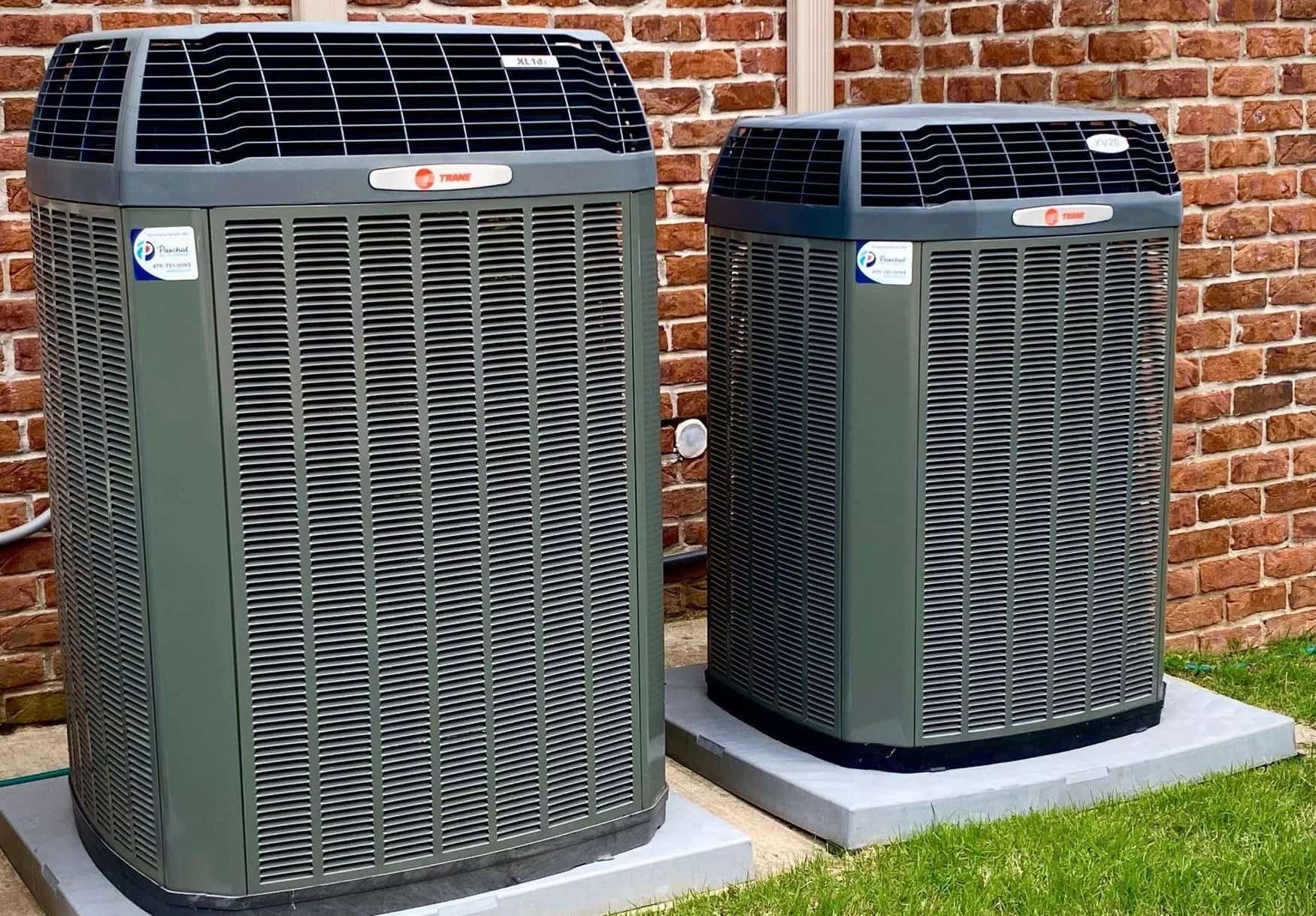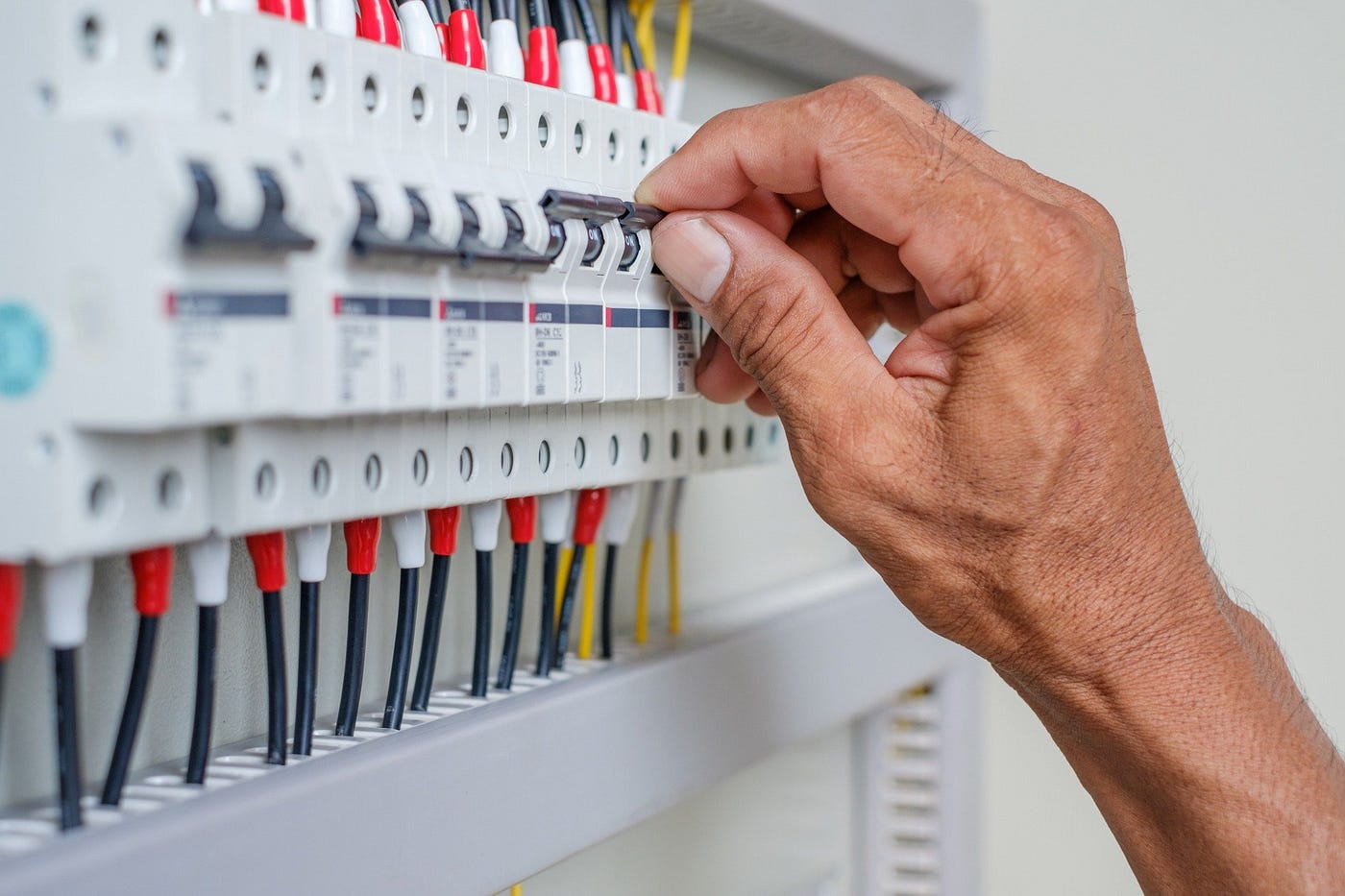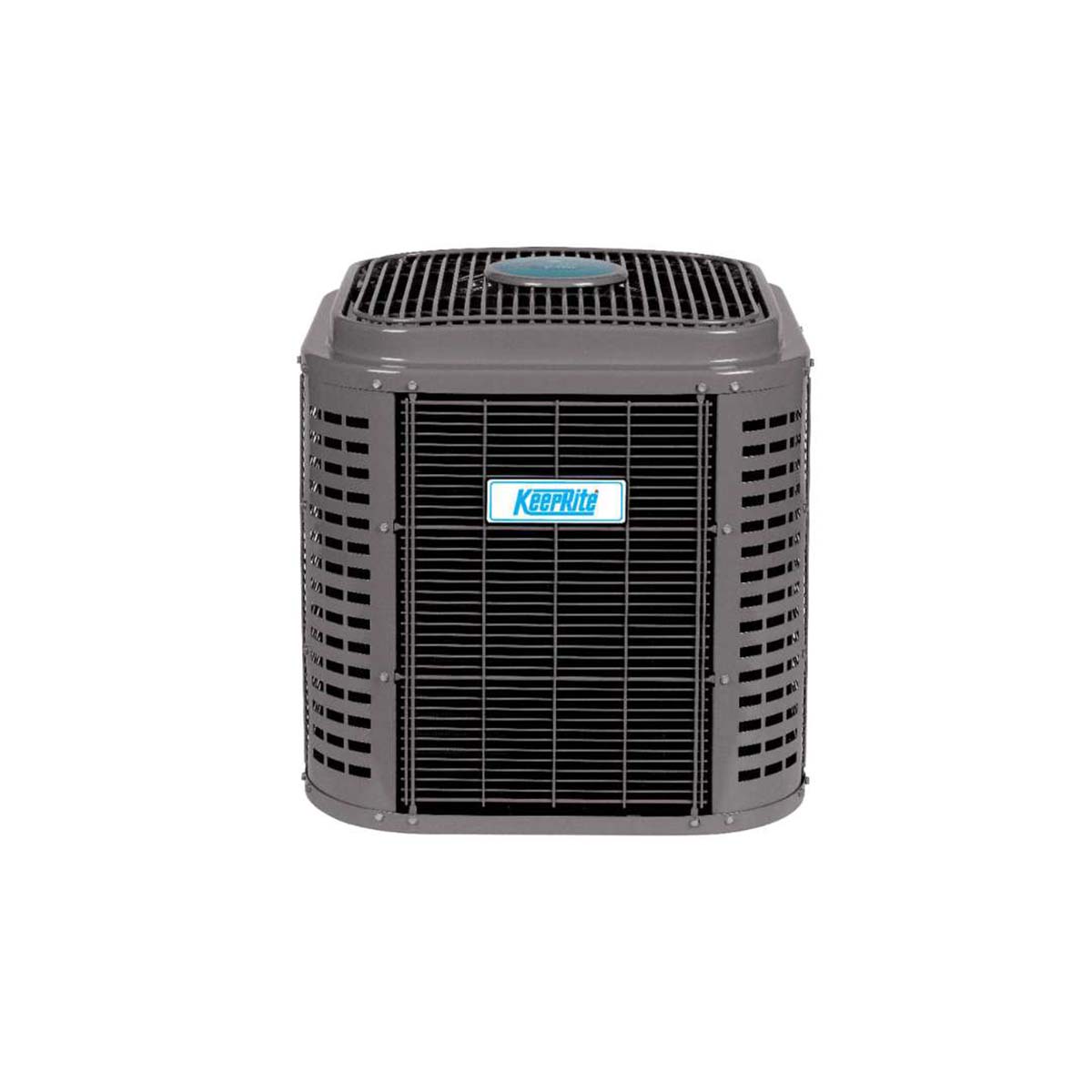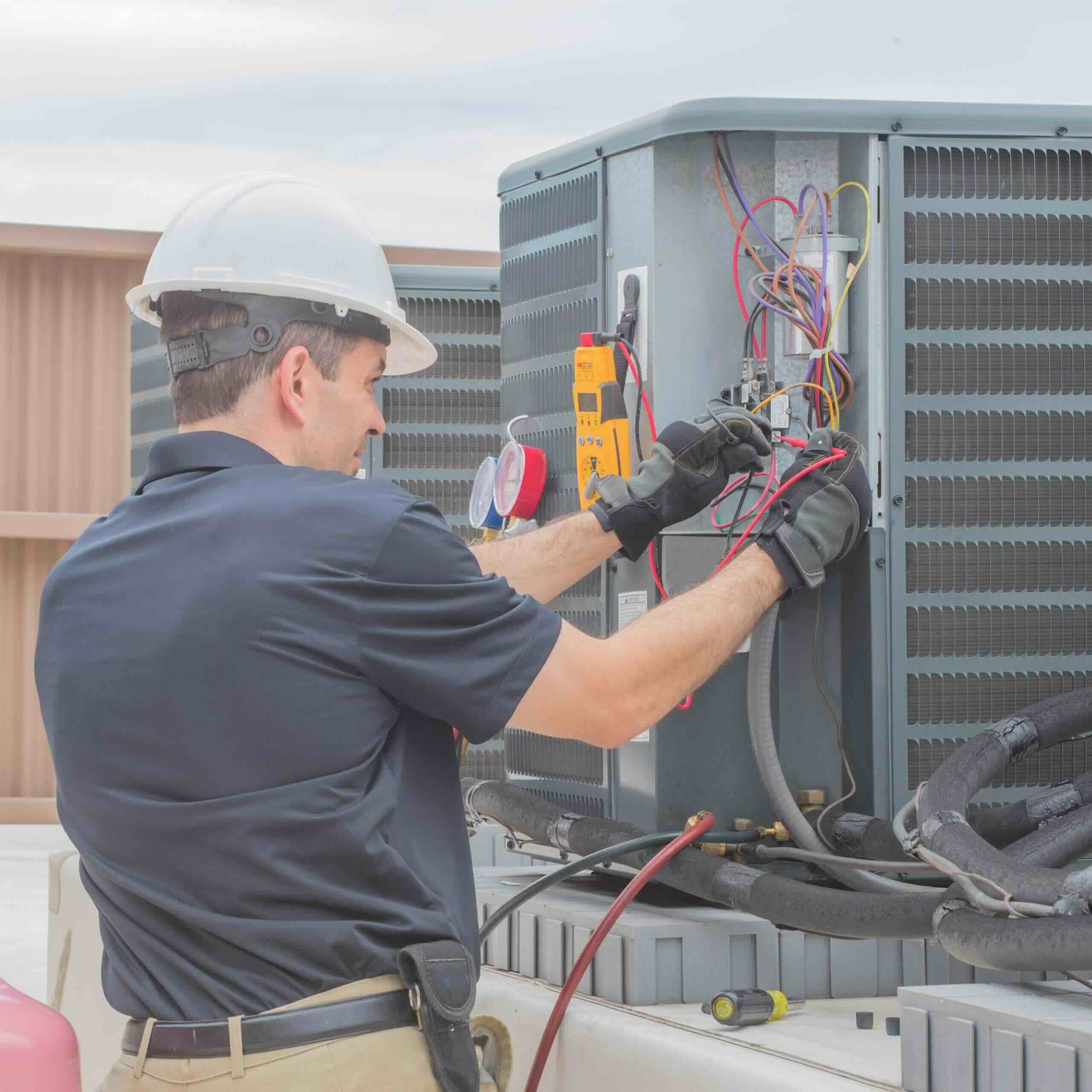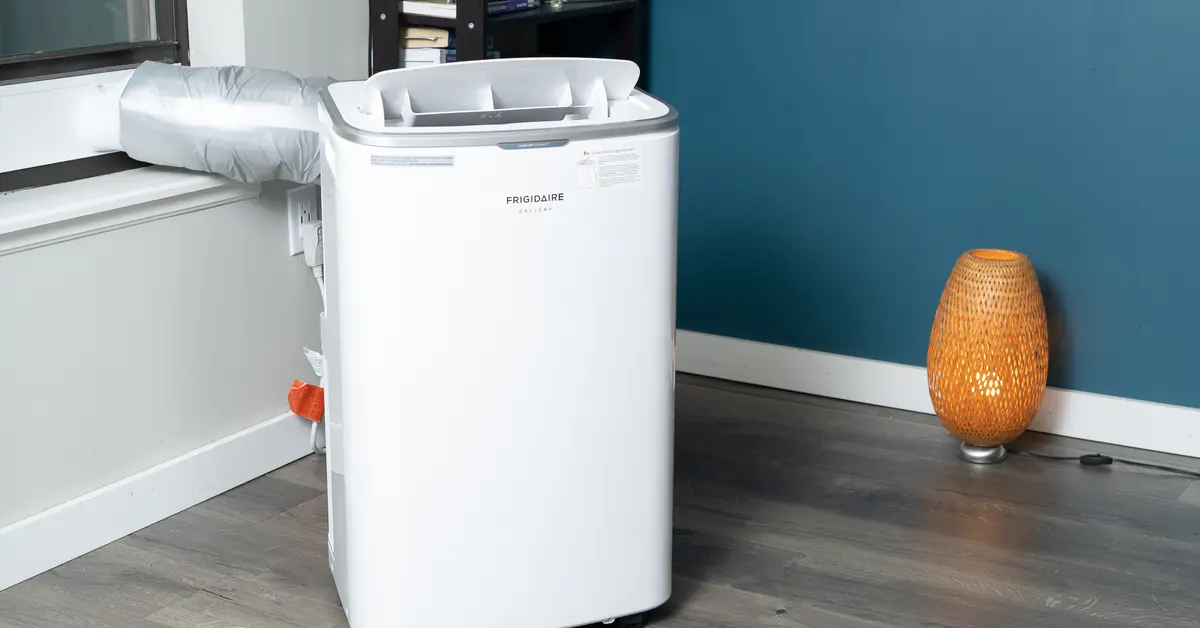Home>Home Maintenance>What Is A PTAC Air Conditioner
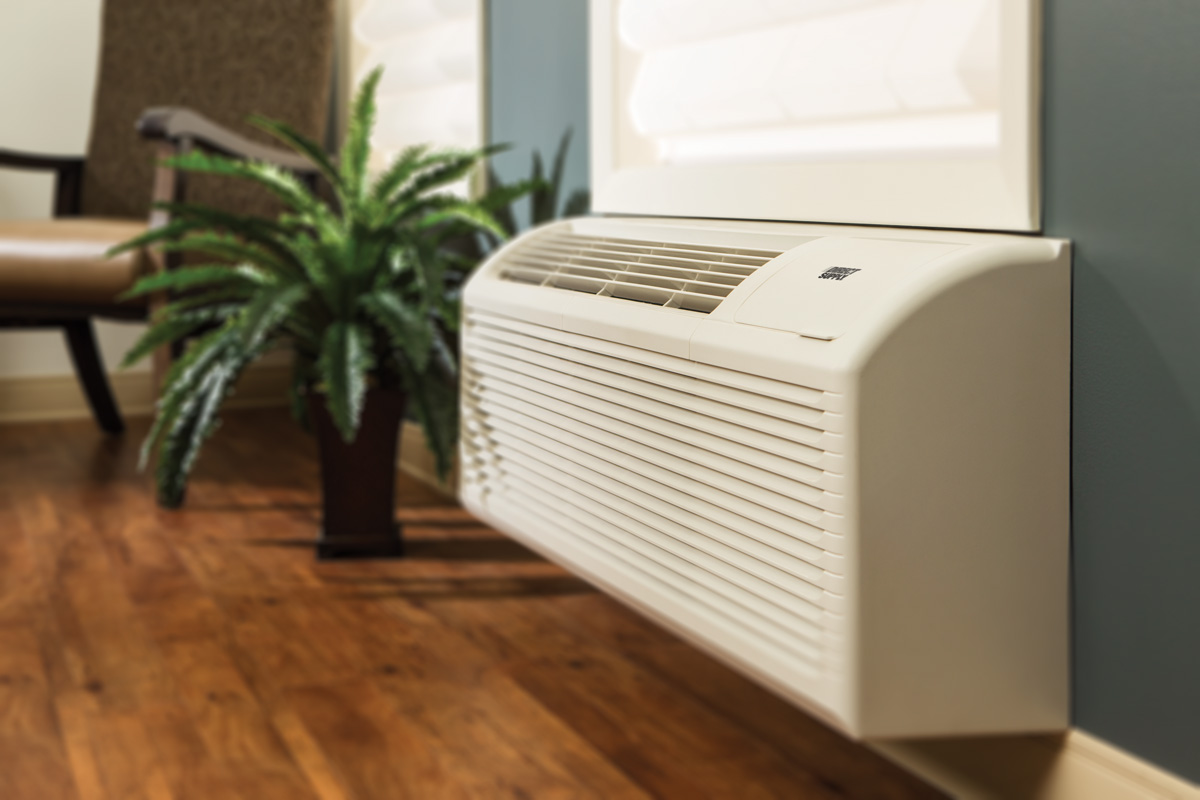

Home Maintenance
What Is A PTAC Air Conditioner
Modified: October 20, 2024
Learn what a PTAC air conditioner is and how it can improve your home's comfort. Discover the benefits of PTAC units and their importance in home maintenance.
(Many of the links in this article redirect to a specific reviewed product. Your purchase of these products through affiliate links helps to generate commission for Storables.com, at no extra cost. Learn more)
Introduction
Welcome to the world of PTAC air conditioners! If you’re not familiar with this term, you might be wondering what exactly a PTAC air conditioner is and why it matters. In this article, we’ll delve into the world of PTAC air conditioners, explaining what they are, how they work, and why they are beneficial for various applications.
PTAC stands for “Packaged Terminal Air Conditioner.” It is a type of air conditioning system commonly found in hotels, motels, apartments, offices, and other commercial and residential spaces. Unlike central air conditioning systems that cool an entire building, PTAC air conditioners are designed to cool individual rooms or areas.
One of the defining features of PTAC air conditioners is their self-contained nature. Each unit includes all the necessary components, such as the compressor, condenser, and evaporator, within a single housing. This compact design allows for easy installation and simplified maintenance.
The concept of PTAC air conditioners originated in the mid-20th century and has since gained popularity due to their versatility, affordability, and ease of use. Whether you’re managing a hotel, overseeing a multifamily property, or simply looking for a reliable cooling solution for your home, understanding PTAC air conditioners can be incredibly beneficial.
Throughout the rest of this article, we’ll take a closer look at the inner workings of PTAC air conditioners, explore the advantages they offer, discuss common applications, and provide tips for installation and maintenance. By the end, you’ll have a thorough understanding of PTAC air conditioners, and hopefully, you’ll be equipped to make informed decisions when it comes to choosing the right cooling system for your needs.
Key Takeaways:
- PTAC air conditioners provide individualized cooling and heating for rooms, offering cost-effective, energy-efficient, and easy-to-install solutions for hotels, apartments, and offices.
- Regular maintenance and energy-efficient practices can optimize the performance of PTAC air conditioners, ensuring long-term comfort and environmental sustainability.
Read more: What Is A PTAC HVAC Unit
Definition of a PTAC Air Conditioner
A PTAC air conditioner, short for Packaged Terminal Air Conditioner, is a self-contained HVAC system designed to provide both cooling and heating to individual rooms or areas. It consists of a single unit that is typically mounted through the wall, with one side facing the interior space and the other side facing the exterior.
PTAC air conditioners are commonly found in hotels, motels, apartments, hospitals, offices, and other commercial and residential buildings where individual temperature control is desired. They are popular due to their ease of installation, cost-effectiveness, and ability to provide personalized comfort.
These units are available in a range of sizes and capacities to accommodate different room sizes and cooling requirements. The cooling capacity of a PTAC air conditioner is measured in British Thermal Units (BTUs). The higher the BTU rating, the greater the cooling power of the unit.
One of the key components of a PTAC air conditioner is the compressor, which is responsible for circulating refrigerant and facilitating the heat exchange process. The refrigerant absorbs heat from the indoor air and transfers it to the outdoor environment, cooling the room in the process.
In addition to cooling, many PTAC air conditioners also have a heating mode. These units utilize a reverse-cycle system, also known as a heat pump, which extracts heat from the outdoor air and transfers it indoors to provide warmth during colder months.
PTAC air conditioners are designed for easy operation and control. Most units come with a control panel located on the front of the unit, allowing users to adjust the temperature, fan speed, and other settings. Some models also have remote control capabilities, offering added convenience.
Overall, PTAC air conditioners offer a versatile cooling and heating solution for individual spaces. Whether you’re looking to cool a hotel room, an office, or your home, a PTAC air conditioner can provide efficient and reliable temperature control, enhancing comfort and productivity.
How Does a PTAC Air Conditioner Work?
To understand how a PTAC air conditioner works, it’s essential to grasp the basic principles of refrigeration. PTAC air conditioners operate on the refrigeration cycle, which involves the evaporation and condensation of a refrigerant to absorb and release heat.
The process begins with the compressor, which is the heart of the PTAC unit. The compressor pressurizes the refrigerant gas, raising its temperature and energy level. This high-pressure, high-temperature gas flows to the condenser coil, located on the exterior side of the unit.
In the condenser coil, the hot refrigerant gas releases heat to the outside environment. As it cools, it transforms into a high-pressure liquid. The liquid then enters the expansion valve, a small device that creates a pressure drop, causing the liquid refrigerant to evaporate into a gas.
As the refrigerant evaporates, it absorbs heat from the indoor air, cooling the room. This process occurs in the evaporator coil, which is located on the interior side of the unit. The evaporator coil is cooled by a fan that blows indoor air over it, enhancing the heat exchange.
The cooled air is then pushed back into the room, providing a refreshing and comfortable environment. Meanwhile, the refrigerant gas, after absorbing the heat, returns to the compressor to start the cycle again.
In addition to the cooling mode, PTAC air conditioners can also provide heating. In heating mode, the refrigeration cycle is reversed. The system extracts heat from the outdoor air and transfers it indoors, effectively warming the room.
This heat exchange is made possible by a reversing valve, which alters the flow of refrigerant. When switching to heating mode, the reversing valve diverts the flow, allowing the condenser coil to function as an evaporator, absorbing heat from the outside air. The heated refrigerant then flows to the indoor evaporator coil, where it releases the heat to warm the room.
Overall, the refrigeration cycle in a PTAC air conditioner enables efficient and effective temperature control. It allows for the removal of heat from the indoor air during cooling mode and the extraction of heat from the outdoor air during heating mode, ensuring year-round comfort in various settings.
Benefits of Using a PTAC Air Conditioner
PTAC air conditioners offer numerous benefits that make them a popular choice for both commercial and residential applications. Here are some of the key advantages of using a PTAC air conditioner:
- Individual Temperature Control: One of the major benefits of PTAC air conditioners is their ability to provide individual temperature control. Each unit operates independently, allowing users to customize the temperature settings according to their comfort preferences.
- Energy Efficiency: PTAC air conditioners are designed to be energy efficient. They use advanced technologies and components, such as efficient compressors and fan motors, to optimize energy consumption. This not only helps reduce utility bills but also minimizes the environmental impact.
- Cost-Effective: Compared to central air conditioning systems, PTAC air conditioners are typically more affordable to install and maintain. Their compact design and self-contained nature also make them a cost-effective cooling solution for individual rooms or small spaces.
- Easy Installation: Installing a PTAC air conditioner is relatively simple and straightforward. These units are designed to be mounted through a wall, eliminating the need for extensive ductwork or major modifications to the existing infrastructure. This makes them a convenient option for retrofitting or adding cooling capabilities to a space.
- Flexible Zoning: With PTAC air conditioners, it’s easy to create different zones within a building or residence. Each unit can be independently controlled, allowing for personalized comfort in different rooms or areas. This flexibility is particularly advantageous in hotels, apartments, and office buildings where occupants have varying temperature preferences.
- Quiet Operation: PTAC air conditioners are designed to operate quietly, ensuring minimal disturbance in occupied spaces. This is especially important in hospitality settings, such as hotels, where guest comfort and relaxation are paramount.
- Low Maintenance: These units are relatively low maintenance, thanks to their self-contained design. Routine maintenance tasks typically include cleaning or replacing air filters and ensuring the condenser coil remains clear of debris. Regular maintenance helps prolong the lifespan of the unit and ensures optimal performance.
- Heating Capabilities: In addition to cooling, many PTAC air conditioners offer heating capabilities. This makes them a versatile solution for year-round comfort, allowing users to adjust the temperature according to the changing seasons.
Overall, PTAC air conditioners provide a range of benefits, including personalized temperature control, energy efficiency, cost-effectiveness, ease of installation, zoning flexibility, quiet operation, low maintenance, and heating capabilities. Whether you’re managing a hotel, apartment building, or simply looking for efficient cooling and heating in your home, a PTAC air conditioner can meet your needs while offering comfort and convenience.
Common Applications of PTAC Air Conditioners
PTAC air conditioners are versatile cooling systems that find application in various commercial and residential settings. Here are some of the common applications where PTAC air conditioners are widely used:
- Hotels and Motels: PTAC air conditioners are a staple in the hospitality industry. They provide individual temperature control for hotel rooms, ensuring guest comfort and satisfaction. These units are compact, easy to install, and can be operated independently in each room, allowing guests to set their preferred temperature levels.
- Apartments and Condominiums: In multifamily residential buildings, PTAC air conditioners offer an efficient and cost-effective cooling solution. Each unit can be installed in individual apartments or condominiums, allowing residents to regulate the temperature in their living spaces according to their preferences. PTAC units also eliminate the need for centralized cooling systems, providing greater flexibility for property management.
- Office Buildings and Commercial Spaces: PTAC air conditioners are commonly found in offices, retail stores, small businesses, and other commercial spaces. These units provide localized cooling, allowing employees and customers to enjoy a comfortable working or shopping environment. The ability to control the temperature in different areas of the building independently makes PTAC air conditioners an attractive option for commercial applications.
- Hospitals and Healthcare Facilities: PTAC air conditioners are widely used in healthcare settings due to their ability to maintain precise temperature control and air quality. These units are often found in patient rooms, treatment areas, and medical offices. PTAC air conditioners help create a clean and comfortable environment necessary for patient recovery and wellbeing.
- Classrooms and Educational Facilities: PTAC air conditioners are popular in schools and educational institutions. They provide efficient cooling for classrooms, libraries, auditoriums, and other areas where temperature control is critical for students’ concentration and comfort. The individual room control allows teachers and administrators to adjust the temperature according to the specific requirements of each space.
- Residential Homes: While PTAC air conditioners are more commonly associated with commercial settings, they are also suitable for residential use. They are often installed in homes without existing central cooling systems or in rooms that require additional cooling, such as home offices, basements, or guest rooms. PTAC air conditioners offer personalized comfort and energy-efficient cooling without the cost and complexities of installing a central HVAC system.
These are just a few examples of the many applications where PTAC air conditioners excel. Their versatility, affordability, and ease of installation make them a popular choice for various spaces, providing efficient and customized cooling solutions for both commercial and residential needs.
Read more: What Is An Evaporative Air Conditioner
Key Features and Components of PTAC Air Conditioners
PTAC air conditioners are designed with a range of features and components that contribute to their performance, convenience, and versatility. Understanding these key features and components can help you make an informed decision when selecting a PTAC unit. Here are some of the essential elements of PTAC air conditioners:
- Compressor: The compressor is the heart of a PTAC air conditioner. It is responsible for pumping and pressurizing the refrigerant, enabling the heat exchange process. Quality compressors ensure efficient cooling and heating operation.
- Condenser Coil: The condenser coil is located on the exterior side of the PTAC unit. It helps dissipate heat from the refrigerant to the outdoor environment. Efficient condenser coils promote optimal cooling and heating performance.
- Evaporator Coil: The evaporator coil is located on the interior side of the PTAC unit. It is responsible for absorbing heat from the indoor air, cooling the room in the process. The evaporator coil is cooled by a fan that blows indoor air over it, enhancing the heat exchange.
- Fan Motor: The fan motor in a PTAC air conditioner enables the circulation of air throughout the unit and the room. It ensures proper airflow and helps distribute cooled or heated air efficiently.
- Thermostat: The thermostat in a PTAC unit allows users to set and control the desired temperature. It helps maintain the room at a consistent and comfortable level by regulating the cooling or heating operation of the unit.
- Control Panel: PTAC air conditioners are equipped with a control panel located on the front of the unit. The control panel provides easy access to various settings, allowing users to adjust temperature, fan speed, mode (cooling or heating), and other operational features.
- Fan Speed Options: Many PTAC units offer multiple fan speed options, such as low, medium, and high. This feature allows users to adjust the airflow and noise level according to their preference and comfort needs.
- Remote Control: Some PTAC air conditioners come with remote control capabilities, allowing users to adjust the settings from a distance. Remote control offers added convenience, particularly in hotel rooms or spaces where the unit is mounted in hard-to-reach areas.
- Timer Function: The timer function in PTAC units enables users to program the system to turn on or off at specific times. This feature helps save energy by allowing the unit to operate only when needed.
- Filter: PTAC air conditioners include filters that help capture dust, pollen, and other airborne particles, improving indoor air quality. Regular cleaning or replacement of filters is necessary to maintain proper airflow and ensure efficient operation.
- Noise Reduction Design: Many PTAC units are designed with noise reduction features to minimize operational noise. This is especially important in environments where low noise levels are required, such as hotels or bedrooms.
These are some of the key features and components to consider when choosing a PTAC air conditioner. Each element plays a vital role in the unit’s performance, energy efficiency, and overall comfort. By understanding these features, you can select a PTAC air conditioner that best suits your cooling and heating needs.
When choosing a PTAC air conditioner, make sure to consider the size of the room you want to cool, the energy efficiency of the unit, and any additional features such as remote control or programmable settings.
Installation Requirements for PTAC Air Conditioners
Installing a PTAC air conditioner requires careful consideration of several factors to ensure proper functionality and performance. Here are some key installation requirements to keep in mind:
- Electrical Requirements: PTAC air conditioners require a dedicated electrical circuit to power the unit. It’s essential to follow the manufacturer’s specifications for electrical requirements, including voltage, amperage, and wiring size, to ensure safe and optimal operation.
- Wall Opening: To install a PTAC unit, a wall opening of the appropriate dimensions must be prepared. The size and shape of the opening should match the specifications provided by the manufacturer. It’s important to follow the guidelines to maintain structural integrity and proper fit.
- Clearance: PTAC air conditioners need sufficient clearance space around the unit for proper airflow and maintenance. The manufacturer’s guidelines should be followed regarding the minimum clearance requirements for the sides, top, and front of the unit. This allows for efficient operation and easy access for service and cleaning.
- Drainage: Most PTAC units produce condensate during the cooling process, which needs to be drained away. Proper drainage is essential to prevent water damage and maintain the unit’s performance. The unit should be installed with a suitable drainage system, such as a condensate drain kit or a gravity drainage system, as recommended by the manufacturer.
- Air Sealing: To ensure efficient cooling and heating, it’s important to properly seal the area around the PTAC unit during installation. Any gaps or air leaks can allow conditioned air to escape or allow outside air to enter, affecting the unit’s efficiency and performance. Proper sealing with appropriate materials helps maximize energy savings and maintain comfort levels.
- Installation Height: The height at which a PTAC unit is installed can impact its performance and effectiveness. In general, PTAC units are installed at a height that allows for efficient air distribution and comfortable airflow. The manufacturer’s guidelines should be followed to determine the recommended installation height for the specific model.
- Insulation: Insulating the area around the PTAC unit helps prevent heat transfer, ensuring efficient cooling and heating. Insulating materials can be applied to the wall opening, especially if there is an existing sleeve, to minimize the exchange of heat between the interior and exterior spaces.
- Professional Installation: While some homeowners may choose to install PTAC units themselves, it’s often advisable to seek professional installation. HVAC technicians have the expertise and knowledge to ensure proper installation, including electrical connections, refrigerant line installation, and overall system setup. A professional installation helps ensure safety, efficiency, and compliance with local building codes.
It’s crucial to consult the manufacturer’s installation guidelines and specifications before installing a PTAC air conditioner. Following these requirements will help ensure optimal performance, longevity, and energy efficiency of the unit. Additionally, adhering to local building codes and regulations is essential for a safe and compliant installation.
Maintenance Tips for PTAC Air Conditioners
To ensure proper functionality, energy efficiency, and longevity of your PTAC air conditioner, regular maintenance is essential. Here are some maintenance tips to help you keep your PTAC unit in top condition:
- Clean or Replace Air Filters: The air filters in PTAC units help capture dust, pollen, and other airborne particles. Regularly cleaning or replacing the filters is crucial to maintain proper airflow and indoor air quality. Follow the manufacturer’s guidelines for the recommended cleaning frequency or filter replacement schedule.
- Clean the Coil Surfaces: Over time, the evaporator and condenser coils in a PTAC unit can accumulate dust and debris, reducing their efficiency. Gently clean the coil surfaces using a soft brush or vacuum cleaner to remove any buildup. Avoid using excessive force that could damage the fins of the coils.
- Check and Clean the Condensate Drainage System: A clogged condensate drain can lead to water leakage and potential damage to your PTAC unit. Regularly inspect and clean the condensate drain and drain pan to ensure proper drainage. Remove any blockages or buildup and ensure the drain pipes are securely connected and free of obstructions.
- Inspect and Tighten Electrical Connections: Periodically check the electrical connections of your PTAC unit to ensure they are secure. Loose connections can lead to poor performance, increased energy consumption, and potential electrical hazards. If you notice any loose or damaged wires, contact a professional technician for repairs.
- Keep the Exterior Clean: Regularly clean the exterior of your PTAC unit to remove dirt, dust, and debris that can accumulate on the housing. Wipe the surfaces with a damp cloth and mild detergent. Avoid using abrasive cleaners or excessive water, as it can damage the unit. Clean the exterior grille and ensure that it is free of obstructions for proper airflow.
- Inspect the Fan Motor and Blades: Check the fan motor and blades regularly to ensure they are clean and free from debris. Remove any buildup that may hinder proper fan operation. Lubricate the fan motor as recommended by the manufacturer to maintain smooth and efficient performance.
- Check the Thermostat and Control Panel: Periodically test the thermostat and control panel of your PTAC unit to ensure they are functioning correctly. Verify that the temperature settings are accurate and that the controls respond appropriately. Replace the batteries in wireless remote controls if necessary.
- Schedule Professional Maintenance: While there are some maintenance tasks you can perform yourself, it’s also important to schedule professional maintenance for your PTAC air conditioner. A qualified HVAC technician can perform a thorough inspection, detect any potential issues, perform necessary cleanings and adjustments, and ensure proper system performance. Professional maintenance helps extend the lifespan of your PTAC unit and maximize its efficiency.
By following these maintenance tips, you can keep your PTAC air conditioner in optimal condition, ensuring efficient cooling and heating, improved indoor air quality, and prolonged system lifespan. Regular maintenance helps prevent major issues, reduces energy consumption, and saves you money in the long run.
Energy Efficiency Considerations for PTAC Air Conditioners
Energy efficiency is a crucial factor to consider when using PTAC air conditioners. By optimizing the energy efficiency of your unit, you can reduce your energy consumption, lower your utility bills, and minimize your environmental impact. Here are some considerations to improve the energy efficiency of your PTAC air conditioner:
- Choose a High-Efficiency Unit: When selecting a PTAC air conditioner, look for models with a high energy efficiency rating. Units with high seasonal energy efficiency ratio (SEER) ratings indicate better efficiency. Investing in an energy-efficient unit upfront will save you money in the long run.
- Proper Sizing: It’s important to choose a PTAC unit that is properly sized for the space it is intended to cool. An oversized unit will cycle on and off frequently, resulting in inefficient operation. Conversely, an undersized unit will struggle to cool the space adequately. Consult with an HVAC professional to determine the appropriate size for your specific needs.
- Set Temperature Wisely: Avoid setting the temperature too low in cooling mode or too high in heating mode. It’s recommended to set the temperature at a comfortable level and make use of programmable thermostats to adjust the temperature according to your schedule. This helps avoid unnecessary energy consumption.
- Utilize Energy-Saving Modes: Many PTAC air conditioners offer energy-saving modes, such as sleep mode or eco mode. These modes adjust the temperature and fan speed to conserve energy while maintaining a comfortable environment. Take advantage of these features to reduce your energy consumption.
- Use Curtains or Blinds: Utilize curtains or blinds to block direct sunlight during hot periods. This can reduce the heat entering the room, easing the workload on your PTAC unit and improving energy efficiency.
- Seal Air Leaks: Seal any gaps or air leaks around the PTAC unit to prevent conditioned air from escaping and outside air from entering. Proper insulation, weatherstripping, and sealing of the wall opening improves energy efficiency by ensuring that the cooled or heated air remains within the room.
- Regular Maintenance: Following the maintenance tips mentioned earlier is crucial for energy efficiency as well. Regular cleaning and maintenance help keep the unit operating at peak performance, ensuring optimal energy efficiency. Clean filters, coils, and fans contribute to better air circulation and energy-saving operation.
- Ongoing Monitoring: Monitor your PTAC unit’s energy usage and performance to identify any anomalies or issues that may affect energy efficiency. Irregularities such as unusual noise, short cycling, or a sudden increase in energy consumption may indicate a problem that requires attention.
- Consider Supplemental Insulation: In spaces where additional insulation is needed, such as older buildings or rooms with poor insulation, consider adding supplemental insulation to improve energy efficiency. This helps to reduce heat transfer and minimize the workload on your PTAC unit.
- Upgrade to a Programmable Thermostat: Consider upgrading to a programmable thermostat or a smart thermostat that allows you to schedule temperature adjustments throughout the day. This helps optimize energy usage by adjusting the temperature based on occupancy and personal preferences.
By implementing these energy efficiency considerations, you can maximize the performance and cost-effectiveness of your PTAC air conditioner. Taking proactive steps to improve energy efficiency not only benefits your wallet but also contributes to a greener and more sustainable environment.
Read more: What Is An Air Conditioner Condenser
Comparison Between PTAC and Other Types of Air Conditioners
When it comes to cooling your space, it’s essential to understand the differences between various types of air conditioners. Here’s a comparison between PTAC air conditioners and other common types of air conditioning systems:
- Central Air Conditioning: Central air conditioning systems are designed to cool an entire building or home using a network of ductwork. They provide consistent cooling throughout the entire space and offer temperature control for multiple rooms. In contrast, PTAC air conditioners are self-contained units that cool individual rooms or areas. PTAC units offer greater flexibility in terms of zoning and individual temperature control.
- Window Air Conditioners: Window air conditioners are compact units designed to be installed in a window or a designated wall opening. They are typically less expensive than PTAC units and are suitable for cooling a single room or small area. However, window air conditioners lack some of the features and capabilities of PTAC units, such as heating functionality and improved energy efficiency.
- Ductless Mini-Split Systems: Ductless mini-split systems consist of an outdoor unit connected to multiple indoor air handlers. They offer zoned cooling and heating and are more energy-efficient than central air conditioning systems. While PTAC units are self-contained and installed through a wall, ductless mini-splits require a small hole in the wall to connect the indoor and outdoor units. PTAC units are generally more affordable to install and offer independent temperature control for individual rooms.
- Portable Air Conditioners: Portable air conditioners are versatile units that can be moved from room to room as needed. They do not require permanent installation and work by venting hot air outside through a flexible hose. While portable air conditioners offer flexibility, they are typically less efficient and produce more noise compared to PTAC air conditioners.
- Hybrid or Dual-Fuel Systems: Hybrid or dual-fuel systems combine a heat pump with a backup heating source, such as a furnace. These systems provide both cooling and heating capabilities, similar to PTAC units. However, PTAC units are primarily designed for smaller spaces and individual room cooling, while hybrid systems are more suitable for larger homes and commercial buildings.
Each type of air conditioner has its own advantages and considerations. PTAC air conditioners are preferred for their individual temperature control, cost-effectiveness, ease of installation, and zoning flexibility. They are particularly popular in hospitality settings, residential apartments, and small commercial spaces. Other systems like central air conditioning, ductless mini-splits, and hybrid systems offer their own unique features and benefits, catering to different cooling needs and requirements.
Ultimately, the choice between PTAC air conditioners and other types of air conditioning systems depends on factors such as the size of the space, budget, desired level of control, and energy efficiency goals. It is recommended to consult with an HVAC professional to determine the most suitable option for your specific cooling needs.
Conclusion
PTAC air conditioners offer a versatile and efficient cooling solution for various applications, ranging from hotels and apartments to offices and residential homes. These self-contained units provide individual temperature control, energy efficiency, and ease of installation, making them a popular choice in the HVAC industry.
In this article, we’ve explored the definition and working principle of PTAC air conditioners. We’ve discussed their benefits, including individual temperature control, energy efficiency, cost-effectiveness, and flexibility. We’ve also highlighted common applications where PTAC units are commonly found, such as hotels, apartments, offices, and healthcare facilities.
Understanding the key features and components of PTAC air conditioners is crucial for proper installation and operation. Components such as compressors, coils, fan motors, and control panels all contribute to the performance and functionality of these units.
We’ve also emphasized the importance of regular maintenance for PTAC air conditioners. Cleaning or replacing air filters, inspecting and cleaning coil surfaces, checking drainage systems, and tightening electrical connections are just a few maintenance tasks that help ensure optimal performance and energy efficiency.
Energy efficiency considerations are paramount when using PTAC air conditioners. Proper sizing, temperature settings, utilization of energy-saving modes, air sealing, and ongoing monitoring all contribute to reducing energy consumption and minimizing environmental impact.
Lastly, we’ve compared PTAC air conditioners with other types of air conditioning systems such as central air conditioning, window units, mini-split systems, portable air conditioners, and hybrid systems. Each type has its own advantages and considerations, and the choice depends on factors such as space size, budget, and specific cooling requirements.
In conclusion, PTAC air conditioners are a reliable and cost-effective cooling solution for individual rooms or areas. Whether you manage a hotel, reside in an apartment, or want personalized comfort in your home, PTAC units offer efficient temperature control, energy efficiency, and flexibility. By understanding their workings, features, maintenance requirements, and energy efficiency considerations, you can make informed decisions to enhance comfort and efficiency in your space.
Frequently Asked Questions about What Is A PTAC Air Conditioner
Was this page helpful?
At Storables.com, we guarantee accurate and reliable information. Our content, validated by Expert Board Contributors, is crafted following stringent Editorial Policies. We're committed to providing you with well-researched, expert-backed insights for all your informational needs.
